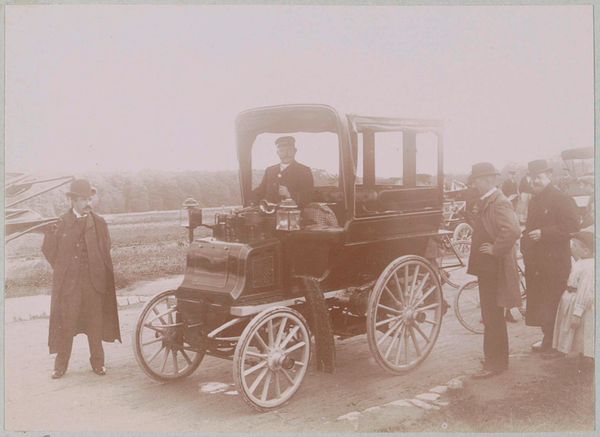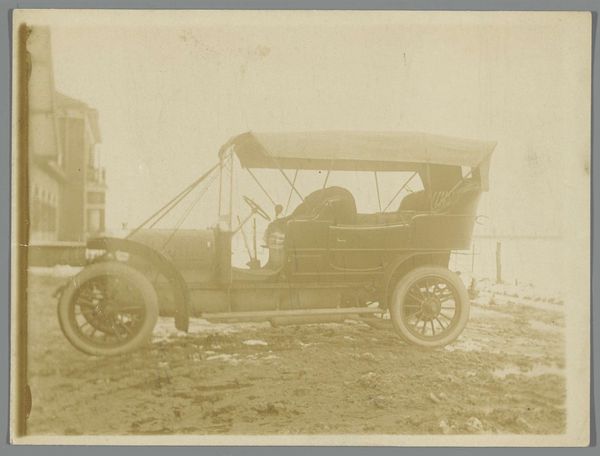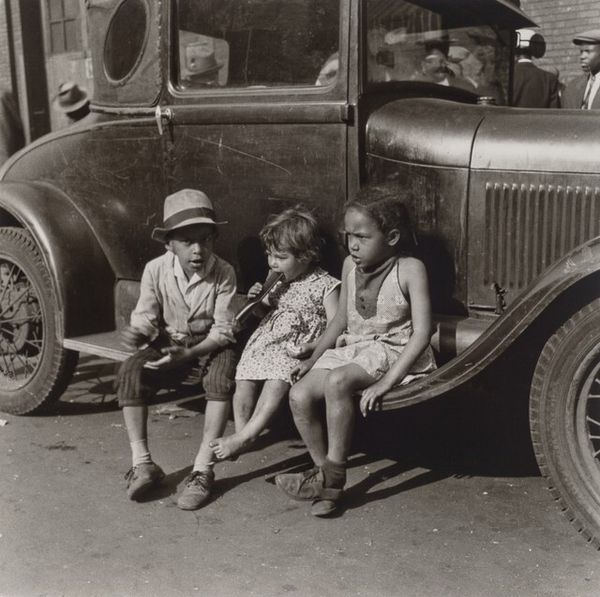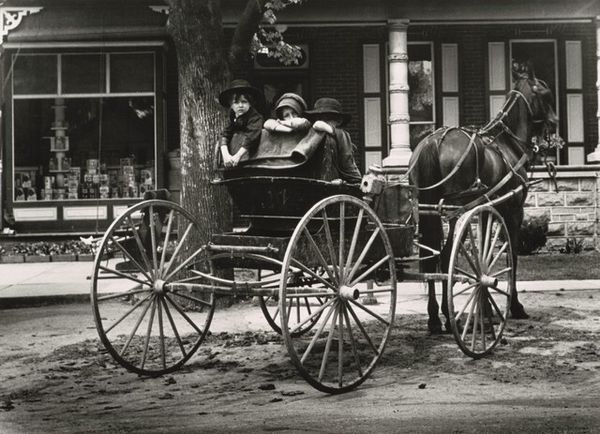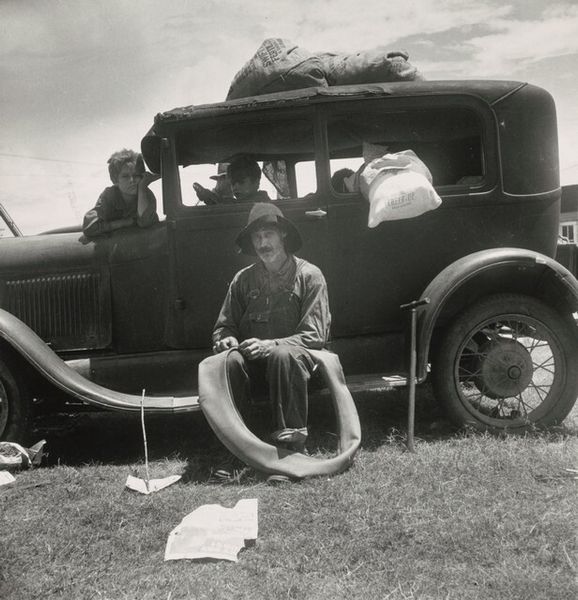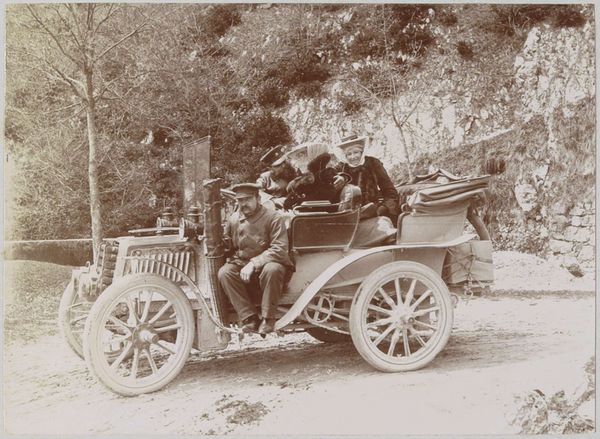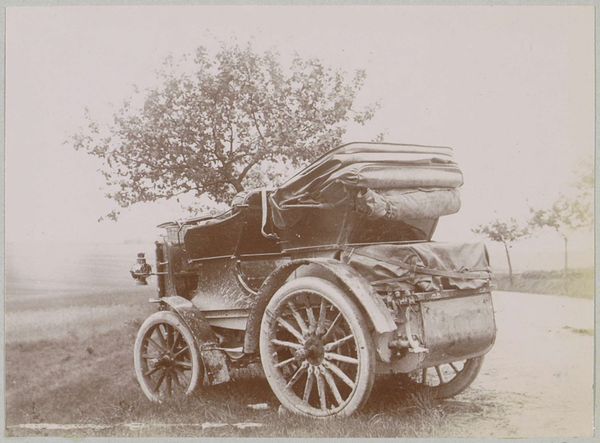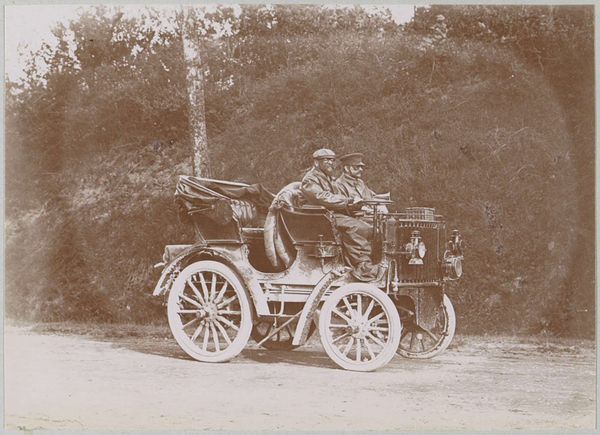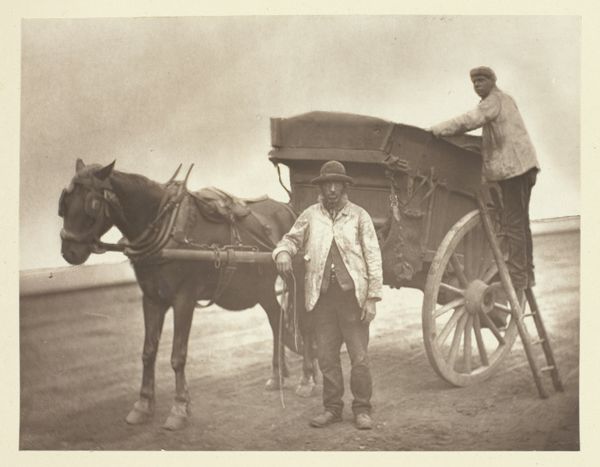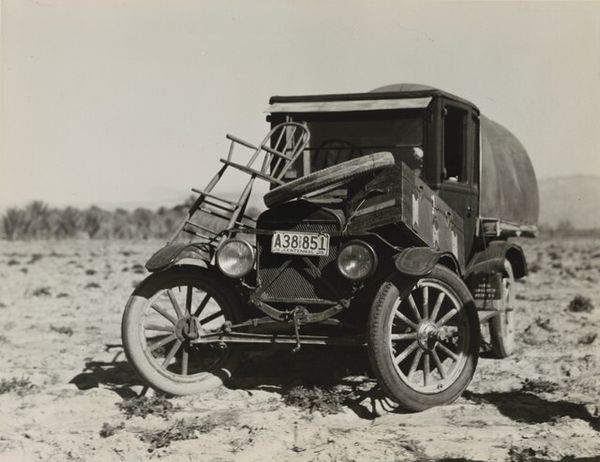
photography, photomontage, gelatin-silver-print
#
portrait
#
black and white photography
#
landscape
#
outdoor photograph
#
figuration
#
social-realism
#
street-photography
#
photography
#
historical photography
#
photomontage
#
gelatin-silver-print
#
monochrome photography
#
history-painting
#
modernism
#
realism
#
monochrome
Dimensions: image: 19.4 × 24.5 cm (7 5/8 × 9 5/8 in.) sheet: 20.3 × 25.7 cm (8 × 10 1/8 in.)
Copyright: National Gallery of Art: CC0 1.0
Editor: So, this is Dorothea Lange’s "Migratory pea pickers, Nipomo, California," taken in 1936, a gelatin silver print. There's such weariness in their faces; you can almost feel the weight of the Great Depression in this photograph. How do you interpret this work? Curator: The weariness is palpable, isn’t it? Lange’s image isn't just a portrait; it's a potent document of the Depression era's brutal realities, particularly impacting itinerant farmworkers. Consider the gendered labor at play; how might ideas about motherhood or masculine roles affect their experience during the Great Depression? Editor: I see what you mean. She is sort of huddled into herself, protecting. He’s got a tension in his jaw, maybe shame that he can’t provide more? Curator: Exactly. Lange wasn't merely capturing destitution. She strategically deployed photography to spotlight societal inequities, pushing for change. Think about how her images challenge capitalist structures. Who benefits, and who is exploited in these economic systems? How does Lange make that visible? Editor: That's powerful. So it is a photograph, but also a call for social reform. What kind of impact did that kind of artwork have at the time? Curator: Immense. Lange’s photographs directly influenced public perception and governmental response, including the New Deal programs. She made these struggles undeniable, demanding that society recognize these individuals' humanity and inherent dignity. Her legacy resides in that call to awareness. Editor: I never thought of photography as such an activist tool! I always considered it just to reflect reality. Thanks for pointing that out! Curator: Absolutely! And remember to question whose reality gets reflected, and who gets left out of the frame.
Comments
No comments
Be the first to comment and join the conversation on the ultimate creative platform.
